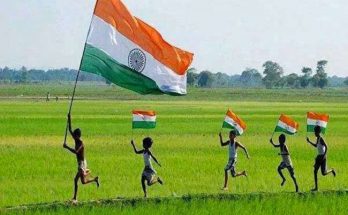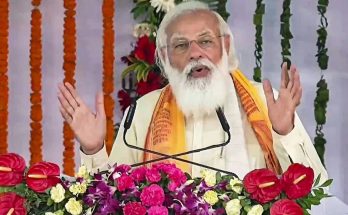 Will Facebookers, YouTube enthusiasts and twitterati swing the 2014 elections in India? In a country of one billion-plus people with barely 150 million Internet users, it’s anybody’s guess how much power social media will wield in the mother of all battles in India’s noisy democracy. But don’t discount the new breed of wired netizens whose numbers are growing by the day – it’s 62 million now and may go up to 80 million in the summer of 2014.
Will Facebookers, YouTube enthusiasts and twitterati swing the 2014 elections in India? In a country of one billion-plus people with barely 150 million Internet users, it’s anybody’s guess how much power social media will wield in the mother of all battles in India’s noisy democracy. But don’t discount the new breed of wired netizens whose numbers are growing by the day – it’s 62 million now and may go up to 80 million in the summer of 2014.
The battle on twitter is being fought intensely by the two potential prime ministerial candidates, Narendra Modi of India’s chief opposition Bharatiya Janata Party and Rahul Gandhi of the ruling Congress party. Modi has some 150,000 twitter followers, and Rahul Gandhi’s twitter constituency has surpassed 1 million.
Clearly, a silent revolution is brewing, which has compelled politicians to take the proliferating social media like Facebook and Twitter seriously. So, refresh your browser, and get ready for electoral combats in India on Facebook, twitter, YouTube and smartphone apps!
The rising numbers are part of the story, but what is weighing in the social media’s favour is the surging influence it has on shaping public debates among the voluble chatterati and the wired young people who pick most of their news and views floating in cyberspace. At the time of the 2009 elections, there were only 1.6 million social media users. According to IRIS, Mumbai-based research group, and the Internet and Mobile Association of India, a trade body, the number of social media users in the country is around 62 million, and could go up to 80 million by May 2014.
The report has some revealing statistics: the number of Facebook users in 160 constituencies is higher than the margin of the victory. The spread of smartphone has added to the overall impact quotient. In India, smartphones are available for as low as Rs 5000 (less than 100 USD, at current rupee-dollar exchange rate) – even HTC, a Taiwanese mobile company, has signed up a deal with Facebook to launch the first of its kind Facebook phone.
Out of 543 Lok Sabha constituencies, 160 are likely to be “highly” influenced by social media while another 67 will see a moderate impact during the general elections scheduled for 2014, says the study. Clearly, politicians have wisened up to the findings of the report. “Disintermediation and the phenomenon of the public mob is the call of the hour,” said Jay Panda, a Member of Parliament representing the Kendrapara constituency in Odisha, one of India’s poorest states. He was speaking at a discussion on social media and elections organised by the global non-profit TiE in New Delhi on the India Internet Day April 26.
Galvanised by the role of social media in igniting anti-corruption protests, Kumar Vishwas, a member of the Aam Aadmi party, a party floated by activist Arvind Kejriwal, is upbeat. “When one sees the victories of the Congress and the BJP in the last Lok Sabha elections, we find that 75 of the 206 seats were won (36 percent) by the Congress (in 2009) and in 43 of the 144 seats (30 percent) where the party finished second are counted among the ‘high-impact” constituencies,” he said. Likewise, 44 of the 116 seats that the BJP won in 2009, and 50 of the 110 seats where the party lost fall in the “high-impact’ category.
Said Ravi Shankar Prasad, a spokesperson of the BJP: “The clout of social media has overcome the television and the print media, like in the classical period the print media was replaced by the broadcast media, we are witnessing an age of the social media being the driving force”.
According to the IRIS report, Maharashtra has the maximum 21 high impact constituencies, followed by Gujarat (17). Uttar Pradesh has 14 high-impact constituencies, while Karnataka has 12 such seats. Tamil Nadu, Andhra Pradesh and Kerala have 12, 11 and 10 such seats respectively. Madhya Pradesh has 9 high-impact constituencies while Delhi has seven. Haryana, Punjab and Rajasthan have five high-impact constituencies each while Bihar, Chhattisgarh, Jammu and Kashmir, Jharkhand and West Bengal have four constituencies.
With the national election barely a year away, India’s political parties look set to use social media as a platform not only for campaigning, but also as an agenda-setter. The jury is still out on how much and to what extent social media will swing the poll roulette in the world’s largest democracy. Minister of State for Human Resource Development Shashi Tharoor, one of India’s most well-wired ministers, is more realistic. Since the medium still touched only a small minority in India, its impact on elections should not be exaggerated, he said. In the same breath, he, however, added: “But the medium is extremely important for brand building and Narendra Modi is the best example of this,” he said.
Author Profile
Latest entries
 CultureJune 29, 2013Brave New Tech World: Enabling the Differently-abled
CultureJune 29, 2013Brave New Tech World: Enabling the Differently-abled CultureJune 20, 2013Every child in school by 2015: India gets UNESCO praise
CultureJune 20, 2013Every child in school by 2015: India gets UNESCO praise Daily FixApril 27, 2013Deadline 2014: Can Facebook, twitter swing India’s poll roulette?
Daily FixApril 27, 2013Deadline 2014: Can Facebook, twitter swing India’s poll roulette? Business with IndiaApril 22, 2013Sunny Days: Making India a solar power hub
Business with IndiaApril 22, 2013Sunny Days: Making India a solar power hub






